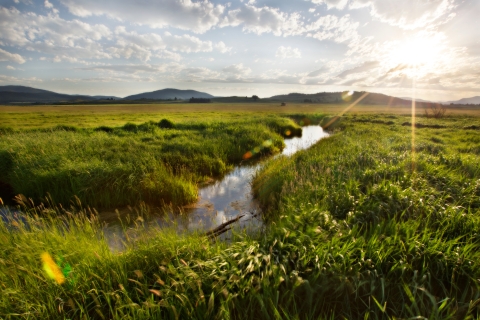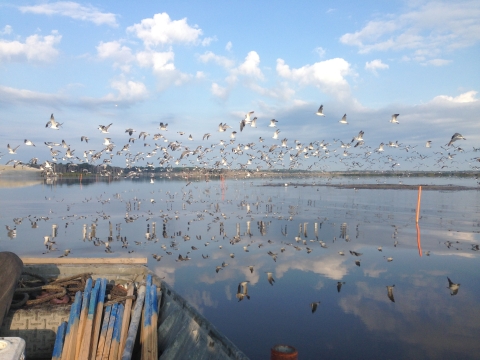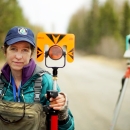What We Do
Our Services
The Partners for Fish and Wildlife Program of the U.S. Fish and Wildlife Service employs 220 biologists, located in all 50 states and territories, who consult with landowners to help them conserve and improve wildlife habitat. Landowner conservation is important because nearly 70 percent of land in the United States is privately owned. Public and private landowners are critical partners in ensuring the health and sustainability of America's fish, wildlife and plant species.
Projects are voluntary and customized to meet landowners’ needs. Participating landowners continue to own and manage their land while they improve conditions for wildlife.
Our staff provide free technical and financial assistance to plan, design, supervise and monitor customized habitat restoration projects. These projects range in size from a wetland of a few acres to a grassland restoration covering several hundred thousand acres.
Many Partners for Fish and Wildlife projects take place on working landscapes such as forests, farms and ranches. We focus our efforts on areas of conservation concern, such upland forests, wetlands, native prairies, marshes, rivers and streams. We design projects to benefit federal trust species including migratory birds, endangered, threatened and at-risk species.
How to Get Started
All private landowners interested in restoring wildlife habitat on their land are eligible to participate. Current partners include farmers, ranchers, forest landowners, recreational landowners, corporations, local governments and universities.
Priority goes to projects judged likely to provide habitat for rare, threatened and endangered species. Projects have a minimum duration of 10 years. In addition to private landowners, we partner with other federal agencies, state agencies and non-governmental organizations to complete projects on private lands.
Participating landowners do not forfeit any property rights and are not required to allow public access.
A phone call or email is all it takes to get started. Contact your state coordinator to schedule an initial site visit and learn how Partners for Fish and Wildlife can help you.
Our Laws and Regulations
Legislation and Economic Impact
The Partners for Fish and Wildlife Act provides for the restoration, enhancement, and management of fish and wildlife habitats on private land through the Partners for Fish and Wildlife Program, a program that works with private landowners to conduct cost-effective habitat projects for the benefit of fish and wildlife resources in the United States. Title LIII of the Servicemember Quality of Life Improvement and National Defense Authorization Act for Fiscal Year 2025 (P.L. 118-159) pertaining to Wildlife Innovation and Longevity Driver reauthorization Act, which reauthorizes the Partners for Fish and Wildlife Program.
A recent analysis of fiscal year (FY) 2023 data showed that every $1.0 million in Partners for Fish and Wildlife (PFW) Program spending supported 15.0 jobs and $2.5 million in economic output nationwide. These contributions are similar to those reported for FY 2022 spending. Economic contributions of PFW Program spending combined with that of leveraged funds is likely to be substantially higher than the results reported here. The annual PFW Program leverage ratio is typically at least 1:4.
Our Services
Our locally based field biologists provide personalized attention and work one-on-one with private landowners to:
- Plan, implement, and monitor projects
- Identify other partners
- Identify funding sources
- Provide permitting guidance, as needed.
Project work may include livestock exclusion fencing/alternate water supply construction, streambank stabilization, restoration of in-stream aquatic habitats, longleaf or shortleaf pine planting, prescribed burning, native grass and forb planting, wetland restoration/enhancement or riparian riparian
Definition of riparian habitat or riparian areas.
Learn more about riparian reforestation.











